The most recent addition to Vitus’s e-MTB line-up is the E-Mythqie LT, which takes everything good about its analogue cousin and adds longer travel and a pedal-assisted platform. While certainly friendlier on the wallet than a vast number of e-mountain bikes on the market, it doesn’t hold back, offering big performance at absolutely banging value, marking it one of the best electric mountain bikes you can buy.
- off-road Opinion - E-bikes aren't a menace, it's all about trail etiquette
- Vitus Mythique 27 VRX trail bike review
- Bike check: Sam Pilgrim's Canyon Torque:ON CF 9
Vitus E-Mythique LT VR e-MTB - Technical details
At first glance, there are not an awful lot of similarities between the very well-reviewed Mythique and this E-Mythique LT. This bike gets more suspension travel with 160mm of suspension at both ends (pricier models get a 170mm fork). It’s a mullet bike with a 650b rear wheel and a 29-inch front so while it’s tough to call it a 'Mythique with a motor' in that respect, the E-Mythique LT borrows the philosophy of its meat-powered sibling. That being great performance and good pricing, the latter thanks to careful specification of budget-friendly but effective componentry.
You would be forgiven for thinking that it looks much more like an E-Sommet. And that’s because it takes many of the cues found on Vitus’s enduro-focused e-bike. It gets the same travel and wheel setup, but its geometry is almost identical, featuring a 483mm reach, a 64-degree head tube angle, and a 78-degree effective seat tube angle. There’s then a 445mm chainstay and 1275mm wheelbase on a large frame as tested.
The VRX and VRS E-Mythiques geometries slacken slightly on account of their 170mm travelled forks, matching that of the E-Sommet.
This bike benefits from internal cable routing for a tidy look, post-mount brake mounts, space in the front triangle for a bottle, and of course, it’s built using 6061-T6 double-butted alloy. The 630Wh battery is then removed using a key, and turning a dial on the underside of the downtube.
But what makes the E-Mythique lineup is that each bike on the range runs on a Bafang M510 motor system that’s been crafted in collaboration with the designers at Vitus, in order to mould it to best suit the bike. In fact, Vitus is the first big bike brand to bring a Bafang unit to an e-mountain bike, ignoring Forestal which uses a vastly different setup.
The Bafang M510 brings a beefy 95Nm to play and Vitus says that it cherry-picked the best features the Chinese motor manufacturer has to offer and incorporated them into this motor. That means that the E-Mythique offers five power modes; Eco, Eco-plus, Trail, Boost, and Race, and that collection gives the rider the chance to tune range and power output to their needs on the fly.
As you might expect, Eco is the lowest level of assistance that outputs 35Nm of torque with a max power of 302W, whereas Eco-plus bumps those numbers up a touch. Trail mode is designed to cover most of a rider’s needs and is designed with a progressive power curve with assistance that increases as a rider increases their effort. Boost and Race is where this motor gets proper interesting as boost outputs 340% of the rider’s input with 85Nm of torque and 550W. Race gets proper silly, employing the full 95Nm of torque, kicking out 400% of assistance. It also gets a fairly lengthy overdrive period, similar to that of Bosch’s Performance Line Race motor.
The E-Mythique gets a progressive leverage ratio in order to give the bike’s suspension a supportive feel at mid-to-end travel, allowing the bike to also play ball with coil shocks. The anti-squat and anti-rise are then balanced to help the bike pedal well in the climbing, or easier gears while keeping things active for grip and comfort in the harder gears that are used for descending.
Vitus E-Mythique LT VR e-MTB - Componentry
As the base build in the E-Mythique LT range, the LT gets a wallet-friendly build kit with an SR Suntour Zeron 36 fork. But don’t worry, even though it carries the same name as those cheapo coil forks found on Halfords’ hardtails, this one is the real deal, offering all of the air-sprung adjustability you need with external compression and rebound dials. The RockShox Deluxe Select R shock is a great addition, too.
It uses Microshift’s Advent X 10-speed drivetrain. The 10 gears cover a decent range with 11-48T cogs and shifting is effective. It’s not as luxuriously smooth as spendier sets but it certainly gets the job done and, of course, with just 10 gears, the bike benefits from a thicker but stronger chain.
The bike is slowed thanks to a pair of Tektro TR203-17 brakes that are complete with four-piston calipers and 203mm rotors at either end of the bike. These brakes have impressed during testing. Their modulation is mighty impressive, though power is slightly lacking. Regardless, they’re useful and plenty for all but the most aggressive of riders.
Inflated onto WTB ST Light i30 rims which are laced to Vitus hubs are tyres from Vee Tire Co – a pair of Attack HPLs. Both come in 2.5in widths while the front gets the brand’s TOP40 compound and Enduro Core casing, whereas the rear gets the e-bike-specific E-Ctrl compound and Override Core casing.
On paper, this bike’s spec may not make the mouth water but, in practice, I’ve been more than impressed and I’ve been able to ride and push this bike as hard as any other. The componentry on this bike requires a little exception but we’ll talk about that more in a little bit.
Vitus E-Mythique LT VR e-MTB - Ride impressions
With all that said and done, the E-Mythique LT looks very much like a more budget friendly version of the current E-Sommet and, to be honest, that’s certainly no bad thing as it’s a very respectable bike with a solid ride quality. It’s not perfect, however, and those imperfections do translate to this less expensive platform.
Jumping onto more budget-friendly bikes comes as one of the most exciting aspects of reviewing tonnes of bikes because when a brand tries hard to offer a bike with excellent performance with a low price tag, there are often a bunch of surprises, and that’s exactly the case with the E-Mythique.
The general bike feel when sitting on the bike is rather good. It’s clearly an enduro-focused rig that has a bias toward descending but when riding over flat terrain, the E-Mythique is well-balanced. Handling feels neutral and it throws no surprises, making liaisons and pedalling about a pleasure.
When the trail points up, the E-Mythique’s carefully chosen geometry works rather well, though I would say that the seat tube feels a little on the slack side when the climb steepens as rider weight is noticeably behind the bottom bracket – but I’m nitpicking here. While, for the most part, you can point the bike up a hill and let it do its thing, when the gradient gets properly steep, the combination of the seat tube and short chainstay means the front end can lift if it’s not seen to. However, in such scenarios, if weight is shifted forwards sufficiently, wheel lift is very easily combatted.
That leads me nicely onto that Bafang motor and this is where the E-Mythique gets very interesting. Its power delivery feels very unique both due to the torque it puts out, which is greater than any other on the market (even the Bosch Performance Line CX Race), and in how it transfers that power to the ground.
I spent my time with this bike flicking through the power modes fairly regularly and each mode presents a stark difference in its output, and so it should. In both Eco and Eco+, things feel pretty normal but when cranking it into Trail, Bafang and Vitus’s take on Bosch’s e-MTB mode that tapers its output to the rider’s input, the motor exacerbates a couple of its quirks. Those come in the form of lag or increased latency which results in an air of unpredictability. It takes a noticeable amount of time before the motor realises what you’re doing with your legs, whether that’s chilling for a second or smashing the power down until it reacts, and outputs the relevant power.
In the higher power, Trail, Boost, and Race modes, the motor struggles to sense the nuances in gradient when climbing. No ascent sits perfectly at a specific percentage – there are imperfections where the gradient steepens and slackens and, in these areas, the motor doesn’t quite keep up, resulting in some level of unpredictability compared to other units. For example, you could be wrenching up something rather steep but for a metre or two where it’s not quite as steep, the motor either doesn’t or takes a while to taper its power output to suit. This then feels like you’ve dropped the clutch at full throttle on a Fireblade as the motor unleashes its full might.
In practice, this had led to a number of whiskey throttle moments, especially when navigating tight uphill switchbacks.
It's a quirk that's not shared amongst other e-MTB motors but, for the money, I can forgive this because, actually, the motor is an impressive bit of kit (again, for the cash) that offers features others don’t at this price. It’s designed with a decent bit of overrun which is helpful both in climbing and descending, where a half-pedal stroke results in a few seconds of bonus power, with the motor alone launching the rider over obstacles with seemingly free speed. This is something that Boost also offers, but not quite in the same volume.
Though, with the fact that it’s a motor that has been designed for performance at an accessible price point, the pair has done a solid job in bringing this unit to market. For the most part, ignoring the points I’ve said before, it works as an e-bike motor should. It might not be as refined or luxurious as something from the more established MTB motor brands but it has massive potential. I’m looking forward to seeing where this goes as my foibles could be mended through firmware updates in the future. It's reasonably efficient too, seeing upwards of 1,100 feet of climbing, mostly in the higher output modes and finishing with a four per cent battery from a full charge.
And that’s a running theme throughout this bike’s build kit. It all works very well, with the fork delivering impressively plush suspension travel, and its brakes summoning up a very usable level of braking power. Granted, neither of these has quite the finesse of spendier units but that’s all it lacks, a smidge of finesse. With that, there’s very little I would be racing to upgrade but that’s apart from the tyres and I would replace the stock organic pads with sintered ASAP.
Even though the Vee Tire Co Attacks inflated onto this bike come with a very familiar tread pattern, they aren't quite up to the job when being pushed. The rear tyre is specced with a super-firm rubber compound that'll no doubt result in great longevity but it gets super squirrely when descending. The Attack at the front benefits from a much softer compound but it lacks confidence, especially in off-camber sections. For general trail riding, this bike can get away with this tyre choice but in more enduro scenarios, or at least ones that are more demanding, and fit for this bike, the tyres hold the bike back. I think even upping the bike's price a bit and speccing better rubber would be a wise choice and one that'll seriously open up the bike's true potential.
Tyres aside, I’ve been surprised with how I’ve been able to ride the E-Mythique without having to make any exceptions for its budget-friendly build. In fact, I’ve been able to ride this bike as aggressively as a bike well north of its price and actually, it’s been tonnes of fun.
That’s solely thanks to a decent geometry and its suspension travel and this is where its E-Sommet roots really come into play. It’s a weighty bit of kit, there’s no two ways about it but that weight makes the suspension work harder, resulting in a smoother and in a way, more capable ride. Both ends of the bike confidently soak up bumps while transferring little distracting feedback to the hands or feet, allowing the rider to focus on what’s ahead.
And while it’s quite the monster truck, it's a bike that utilises its mullet wheelset super effectively, making for a flickable and surprisingly agile machine. But that’s not to say that agility is the E-Mythique’s strong suit, rather the short chainstay makes up for the lack of playfulness that comes as a result of the bike’s weight. Regardless, it’s a fun rig to muscle through corners.
On the descents, the E-Mythique is certainly no slouch. Its slightly more relaxed geometry results in solid capability and instils in the rider plenty of confidence. Throw the bike towards steep chutes, and the front centre that comes as a result of its reasonable reach and somewhat slack head angle keeps the front end supported and helps keep rider weight centred. Then the little rear wheel opens up loads of room over the back of the bike, allowing for big weight shifts during sharp and steep roll-ins.
It’s a bike that encompasses capable e-mountain biking really well, being one that can be pushed super hard, down challenging terrain but it’s shaped with enough balance that new riders can quickly get to grips with the bike. The E-Mythique certainly won’t complain while being pedalled around blue trails, but that’s where its mass of suspension travel and weight could suck some of the fun. Because the bike is so squishy and it’s certainly not the lightest bike around, it requires noticeably more effort to pump and to get airborne but considering its descending prowess, these are fair compromises. Even then, it poses a solid option for fresh riders to grow with and into as their riding improves.
Although this bike will appeal to new riders due to its excellent price, it’s one that should definitely not be shunned by those with more experience under their belt due to its all-round proficiency, especially if they’re looking for a winter e-MTB or simply to add one to the fleet without spending tonnes of cash. The only real downside that more experienced riders will notice is that its rear end isn’t the most communicative. This is both good and bad, as the lack of feedback results in control through tech but it reduces potential liveliness and dulls down opportunities to transmit trail information to your feet.
This VR build of the E-Mythique LT is the base model and as such, it gets a 160mm fork instead of one with 170mm of travel. Having ridden the E-Sommet with the very same geometry with a 170mm fork, I haven’t found myself missing that 10mm of squish. If anything, it makes the bike’s character a bit livelier in the corners thanks to a more responsive steering angle, and also a more manageable behaviour when climbing as the lesser travel results in a slightly lower stack height, shifting weight forwards a touch.
While there are a few mere niggles within the E-Mythique LT VR, its very competitive asking price irons many of them out, so much so that a potential customer would be hard-pushed to find so much pedal-assisted fun for as little money. And, of course, this bike is equipped with all of the mod-cons, which means that owners can very easily upgrade this bike as and when, not that it needs it. However I would recommend a grippier tyre, and owners will need to take good care of the microShift mech. Although it shifts perfectly well, after a single wet and gritty ride, the mech's clutch got super stiff and wouldn't move freely.
Vitus E-Mythique LT VR e-MTB - Verdict
It goes without saying that £3,300 for a performance e-MTB is pretty good value from the outset and at this price point, it’s slim pickings for full-suspension e-mountain bikes.
However, the Rockrider 29-inch full-suspension electric mountain bike (no fancy names here) looks to be another excellent value bike at £3,000. It comes with some differences compared to the E-Mythique LT VR. Firstly, its Brose motor kicks out 70Nm and comes with a 500Wh battery while weighing similarly to the Vitus. Already, the extra £300 looks like money well spent.
It gets the same drivetrain but takes its suspension from X-Fusion’s range with the McQueen R fork and Pro R shock. Having ridden other X-Fusion units on the Marin Alpine Trail E, I reckon the suspension on this E-Mythique LT VR does a better-refined job. The Rockrider, while not a bad thing, is also built with a more trail-focused geometry.
The E-Mythique then looks great value when compared to Giant’s Stance E+ 2 625 which sits at £3,500. It comes with an SR Suntour XCR LO fork, which doesn’t quite stack up to the one on the Vitus and it doesn’t come with a dropper post, which is a must-have for any trail e-MTB these days. Then if it’s power output you’re looking for, the Vitus pips it yet again, as the Giant outputs 75Nm of torque.
While some may snigger that it does not come plastered with logos from more Gucci brands, the E-Mythique LT VR can run with bikes that cost hundreds, if not thousands of pounds more. It’s friendly on the wallet and poses excellent value but most importantly, it really does not hold back on performance. However, its motor isn't without its quirks and it could do with different tyres and sintered brake pads.
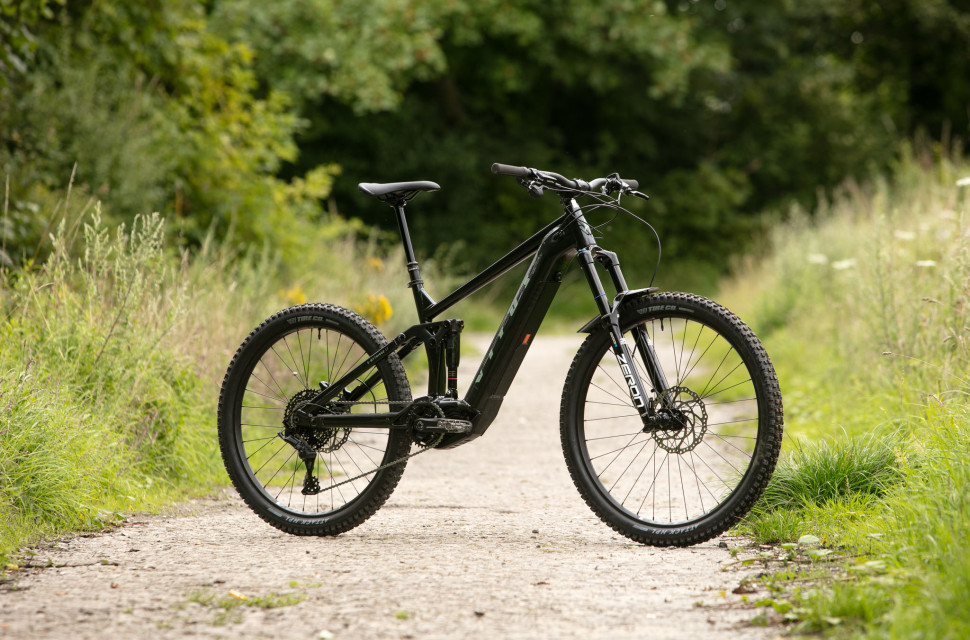











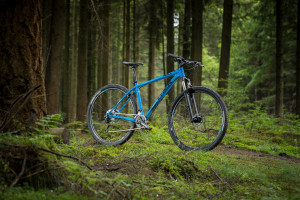

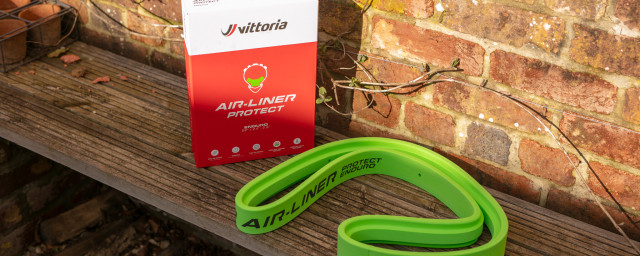
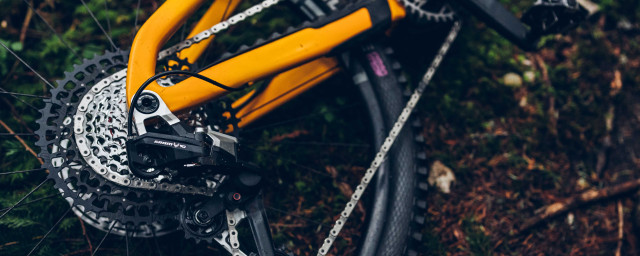

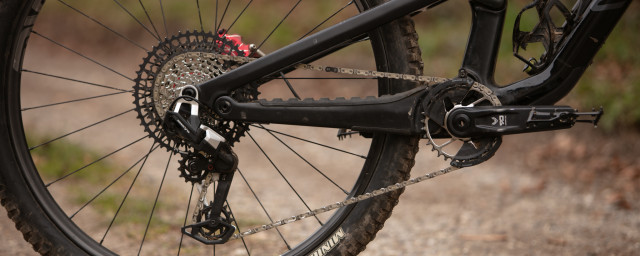
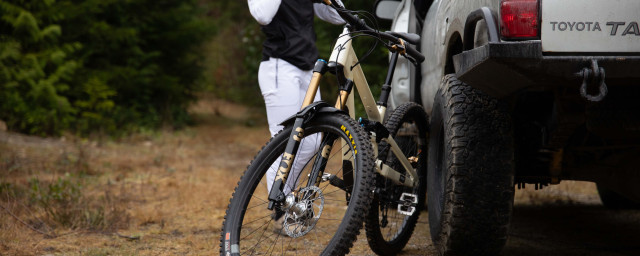
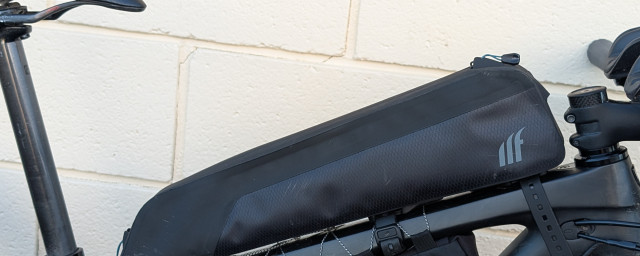
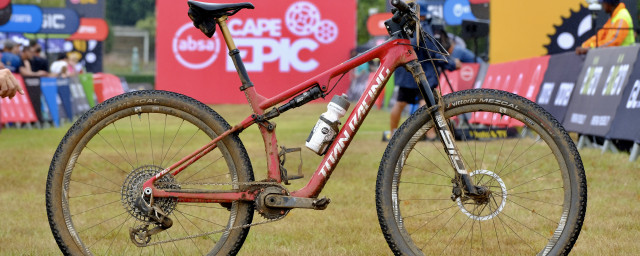

Add comment